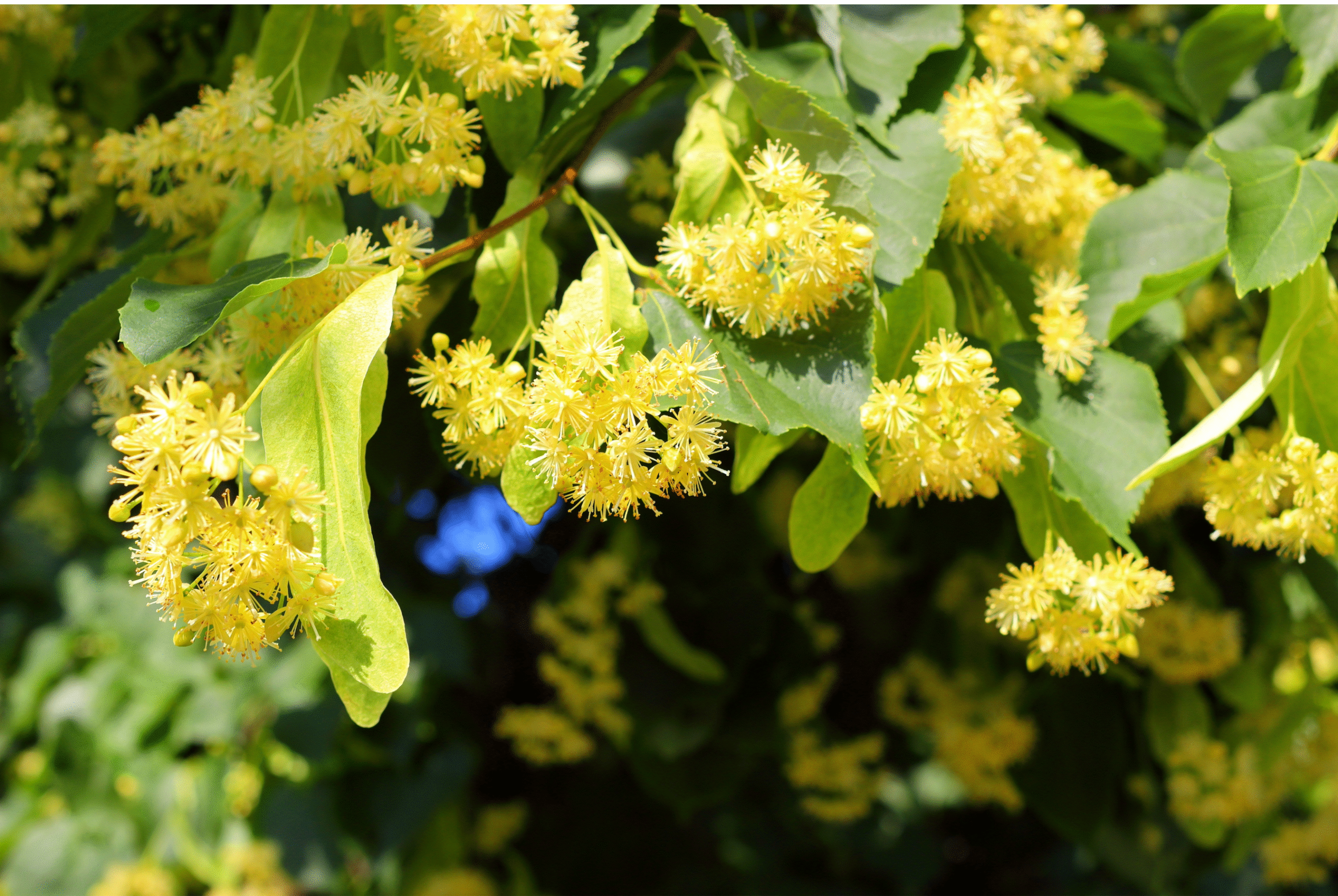Linden Blossoms and Tree
The linden tree – also known in Estonian as niinepuu, lõhmus, or pähnapuu – is one of the most dignified and beloved deciduous trees in our nature. It grows abundantly in Estonia and has long been a part of both everyday life and folk tradition. In medicine, primarily the flowers of the small-leaved linden (Tilia cordata) and the large-leaved linden (Tilia platyphyllos) are used. The linden tree blooms in midsummer, filling the air with a sweet fragrance while bees are busy gathering nectar from its blossoms. In folk belief, the linden was regarded as a sacred tree – many groves of holy trees were lindens, symbolising life and fertility.
The medicinal properties of linden blossoms have been known for centuries. They reduce fever, promote sweating and urination, and have anti-inflammatory effects. Linden blossom tea is one of the most valued natural remedies for colds. It helps relieve coughs and runny noses, soothes the throat, and can even be used as a gargle. For many, it is a warm, comforting drink that eases the discomfort of illness.
Tea made from linden blossoms is especially popular with children due to its naturally mild, slightly sweet taste, which sets it apart from many other herbal teas. From a pharmacognostic perspective, linden blossoms (Tiliae flores) are valued for their biochemical composition: they contain flavonoids (such as tiliroside), mucilage, tannins, and essential oils. Thanks to this unique combination, linden tea has calming, diaphoretic, and mildly anti-inflammatory effects. Unlike many other herbal drugs, it is gentle enough to be safely given to young children, making it a common remedy for mild colds and irritated mucous membranes.
Equally important are the calming effects of linden. Linden blossom tea helps to reduce anxiety and tension, soothes the mind, and promotes relaxation. It is also a good companion in times of mental stress or mood disorders. This is why many people drink it in the evenings before bedtime – a warm cup creates a peaceful atmosphere and supports deeper, more restful sleep.
In folk medicine, the uses of linden blossoms are remarkably wide. Linden tea has traditionally been recommended for respiratory illnesses, digestive troubles, bloating, and heartburn. It has also been used to stimulate gallbladder function, relieve urinary tract infections and fungal conditions, and lower high blood pressure. Linden blossoms can even be added to bathwater, helping to relax muscles, ease rheumatic pains, and reduce the symptoms of gout. Externally, compresses made from linden blossoms were traditionally used to lighten freckles and pigmentation spots, as well as to calm irritated skin.
Some caution is still advised. Linden blossoms are not suitable for people with hypersensitivity or acute cardiovascular diseases. During colds, linden tea is best consumed in short courses – about a week at a time – rather than continuously, to avoid unnecessary strain on the body.
Thus, the linden is far more than just a beautiful tree. It unites natural beauty, the depth of folklore, and health-supporting power. Whether in the midsummer bloom as a feast for bees, honoured as a sacred tree in ancient groves, or cherished in winter as a healing tea, the linden remains an inseparable companion of both our people and our nature.
References:
Pärnaõied – üks armastatumaid ravimtaimi – https://metsauhistu.ee/parnaoied-uks-armastatumaid-ravimtaimi/
Harilik pärn – https://et.wikipedia.org/wiki/Harilik_p%C3%A4rn
Rahvapärased taimenimetused ”Pärn” – https://herba.folklore.ee/?menu=taime&tid=771
Tiliae flos – herbal medicinal product – https://www.ema.europa.eu/en/medicines/herbal/tiliae-flos
